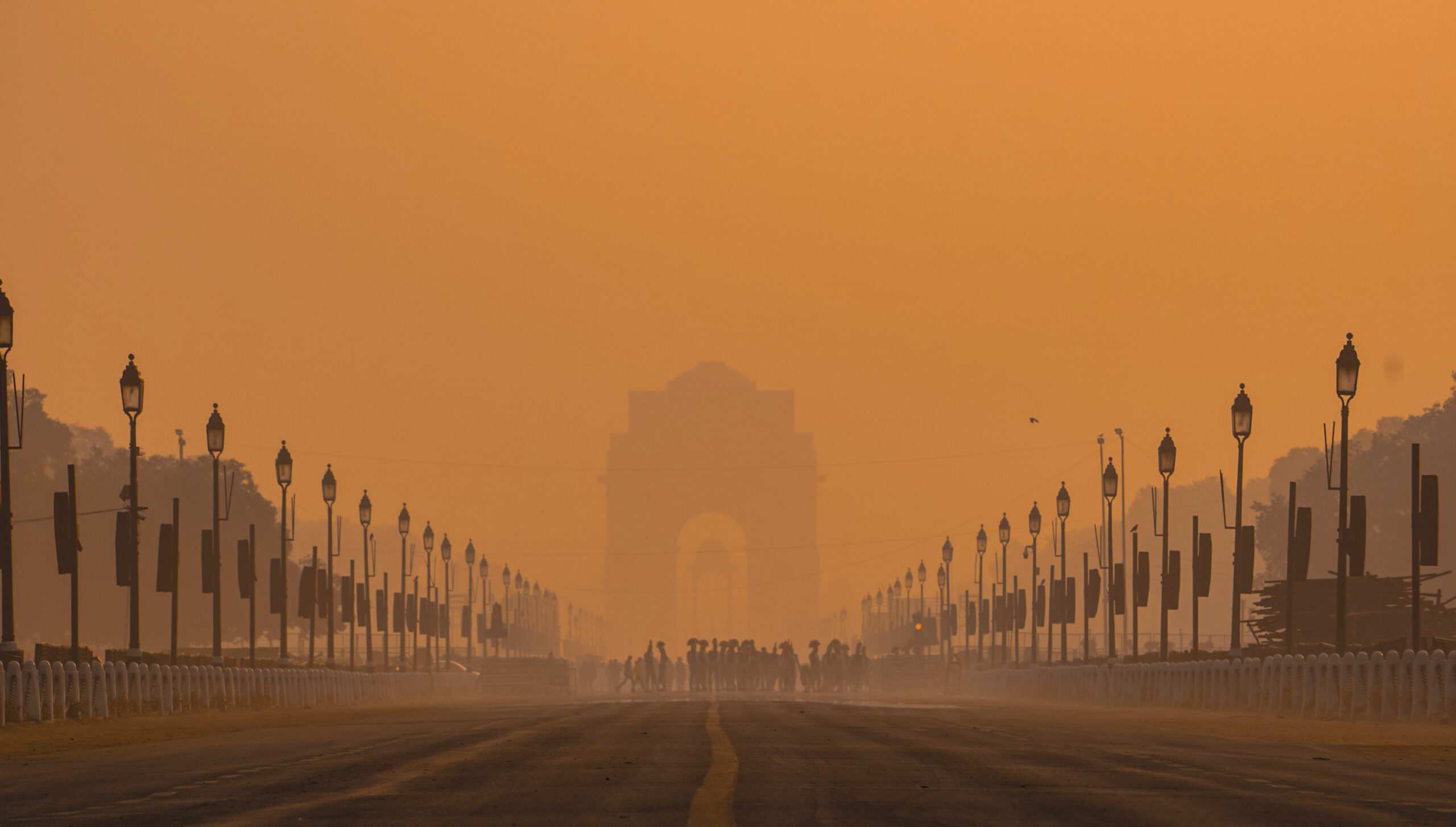“If liberty means anything at all, it means the right to tell people what they do not want to hear.” ― George Orwell.
Introduction
The Indian film industry is the largest in the world in terms of number of films produced with around 1,500 to 2,000 films produced every year in more than 20 languages. The industry also had the second highest footfalls in the world in 2015 (over 2.1 billion) closely following China (almost 2.2 billion)[1]. In modern times, the films are the most powerful medium of expression. The reach and appeal of film’s magical world is insurmountable by any other conventional medium of storytellinge.g. music, art, literature etc. As is the case of any other forms of expression, the films do not only entertain but also educate, propagate ideas or raise questions about history, socio-political issues and religious norms prevalent in the society. The films which aims only to entertain by stereotypical song, dance and dream sequences faces no problem with censorship. It is only when they start questioning the established ideas, exploring the alternate theories to the archetypical socio-political-religious norms, they face the rough weather and run the risk of censorship or ban. The banning and/or censoring films,imperils the creative freedom of a film-maker and poses a potential threat to the rightof freedom of speech and expression of the film-maker.
Freedom of speech and expression is the concept of being able to speak or in any other manner express, freely. It is often regarded as an integral concept in modern liberal democracies and is indispensable part of most of the constitutions in today’s world.[2] In India the right to ‘Freedom of Speech and Expression’ is recognised as a fundamental right enumerated in 19(1)(a).[3] Fundamental Righrs are recognised as those basic rights which are recognized as the natural rights inherent in the status of a citizen[4] and the State’s doesn’t have power to make law hamperingthese rights. However; unlike in United States of America, the rightto ‘freedom of speech and expression’is not absolute and uncontrolled under Indian Constitution.[5] The right is subject to qualified reasonable restrictions enumerated under Article 19(2) of the Constitution[6]. Accordingly, in India, the restriction can be imposed upon the exercise of the right to ‘freedom of speech and expression’ in the interests of:
- the sovereignty and integrity of India,
- the security of the State,
- friendly relations with foreign States,
- public order,
- decency or
- morality,
- in relation to contempt of court,
- defamation
- incitement to an offence
Thus, the “State” in India has express powers under Art 19 (2) to impose ‘reasonable restrictions’ on the exercise of fundamental rights under part III of the Constitution. The principles on which the power of the State to impose restrictions is based is that all individual rights of a person are held subject to such reasonable limitation and regulations as may be necessary or expedient for the protection of the rights of others, generally expressed as social interests.[7]
The legislation with respect the censorship or ban of cinema was enacted in India in 1952 as ‘the Cinematograph Act, 1952, No. 37 of 1952’, (hereinafter the 1952 Act) followed by the Cinematograph (Certification) Rules, 1983, Gen. S.R. 381(E) (hereinafter Rules). The body to regulate the films in India has been created under Section 3 of the 1952 Act, which establishes a regulatory body called as Central Board of Film Certification (CBFC) which is primarily assigned the task of certifying films for public exhibition.[8] The Cinematograph Act, 1952, has given explicit powers to the CBFC under Sec. 4 and 5 of the Act to impose reasonable restrictions on films, if their exhibition violates any of the grounds mentioned in Section 5(B) of the 1952 Act. It is interesting to note that the grounds mentioned under Section 5 (B) of the act, are the same as enumerated under Article 19 (2) of the Constitution of India.
Constitutionality and Legality of Censorship
Films have also been accepted as a form of speech and expression. Film is not only work of fiction but also depicts the contemporary society therefore the censorship of the film should be reasonable due to its impact in society. A film is a medium for expressing and communicating ideas, thoughts, messages, information, feelings and emotions. It may be intended either for public exhibition (commercial or non-commercial) or purely for private use.[9]It was in the case of K.A. Abbas v. Union of India[10]that constitutionality of Censorship as endowed in the 1952 Act was challenged in the Supreme Court for the first time, in which the Court rightly stated- “Films are a medium of communication due to its ability to stir emotions more deeply than other forms of Art which has to be treated separately due to ability to stir emotions more deeply than other forms of art.”
In the case, a documentary, ‘A Tale of Four Cities’ was denied unrestricted exhibition by the Board. They asked the petitioner(Abbas) to cut a few scenes from the documentary which featured certain red-light areas of Bombay, for it to get a screening certificate. K.A. Abbas however, did not heed to the demands of the Board and appealed to the Supreme Court as a violation of his freedom of expression. The constitutionality of censorship under the Cinematograph Act, 1952 along with the Censorship Rules was challenged. But the Supreme Court upheld the constitutionality within the ambit of Article 19(2) and added that films have to be treated separately from other forms of art and expression because a motion picture is ‘able to stir up emotions more deeply than any other product of art’. However, at the same time it cautioned that it should be ‘in the interests of society.’ The Supreme Court held the view that “censorship of films, their classification according to the age groups and their suitability for unrestricted exhibition with or without excisions is regarded as a valid exercise of power in the interest of public morality, decency etc. This is not to be construed as necessarily offending the freedom of speech and expression.” Further the Court held that: “Censorship in India (and pre-censorship is not different in quality) has full justification in the field of the exhibition in cinema films. We need not generalize about other forms of speech and expression here for each such fundamental right has a different content and importance. The censorship imposed on the making and exhibition of films is in the interest of society. If the regulations venture into something which goes beyond this legitimate opening the restrictions, they can be questioned on the ground that a legitimate power is being abused. We hold, therefore, that censorship of films including prior restraint is justified under our Constitution.”[11]
The court not only reiterated the freedom of speech and expression but also the role of films as a legitimate medium for the exercise of it. “The exhibition of films cannot be suppressed on account of threat of violence’’. Thus, the case, albeit it upheld the power of CBFC to censor a film, is an important landmark in recognizing the fact that making and exhibition of films is part of the fundamental right of ‘Freedom of Speech and Expression’ guaranteed under Article 19 (1) (a) of the Constitution of India.
The case of Rangarajan v. P. Jagjivan Ram[12]is another landmark cases that dealt with the issue. The film under the scanner was a Tamil film called Ore Oru Gramathile (In One Village), which critiqued the reservation policy of the Tamil Nadu Government. The Madras High Court revoked the U-certificate granted to the film stating that the reactions to the film could be capricious in the state. On appeal against this decision to the Apex Court, the fundamental right of free speech and expression of Filmmaker was upheld by the Honorable Court which clearly stated in this case;
“We are amused yet troubled by the stand taken by the State Government with regard to the film which has received the National Award. We want to put the anguished question, what good is the protection of freedom of expression if the State does not take care to protect it? If the film is unobjectionable and cannot constitutionally be restricted under Article 19 (2), freedom of expression cannot be suppressed on account of threat of demonstration and processions or threats of violence. That would tantamount to negation of the rule of law and a surrender to black mail and intimidation. It is the duty of the State to protect the freedom of expression since it is a liberty guaranteed against the State. The State cannot plead its inability to handle the hostile audience. It is its obligatory duty to prevent it and protect the freedom of expression”.
This case rejected the idea of censorship on mere apprehension that there could be adverse reaction by some sections of public. The Court observed that it is the duty of the State to protect the freedom of expression since it is a liberty guaranteed against the State. The State cannot plead its inability to handle the hostile audience problem. As censorship is permitted only on the grounds under Article 19(2), the standard to be applied by the board or courts for judging the film should be that of an ordinary man of common sense and prudence and not that of a hypersensitive man.”[13]
The law with respect to the censorship of films in India has evolved through landmark cases such as Ranjit D. Udeshi v. State of Maharashtra,[14]Raj Kapoor and Others v. State and Others,[15]Bobby Art International v. Om Pal Singh Hoon (Bandit Queen case) and Others,[16]Director General, Directorate General of Doordarshan and others v. Anand Patwardhan and another,[17] and it has come to be established that the censorship is a lawfully recognized statutory power conferred by the Cinematograph Act, 1952 to the statutory authority i.e. CBFC.[18]However, the scope of this legitimate power to impose restrictions needs to be ascertained. It is evident from the above judgments that the censorship of films in India has been upheld in the interest of society, that is to say; films have been a powerful tool of communication, inspiration and dissemination of various arts, culture and even factual occurrences among other media. In such a scenario, in a diverse country like India with sundry castes and classes of people there are bound to be concerns other than moral apprehensions. There have been several instances in the past when films have been denied certification or screening, or there were considerable excisions ordered by the Board subject to certification, due to apprehensions of disharmony between castes and classes of people, fear of riots in the country and other such disturbances. It has been well settled law that while judging the likely effect of the exhibition of a film or of reading book, “the standard for judging films must be reasonable, strong minded, firm and that of courageous men” or as has been said in English law, “the man on the top of a ‘Clapham omnibus’, and not those of weak and vacillating minds nor of those who scent danger in every hostile point of view.”[19]The Censorship to that extent is legal and valid as provided by the 1952 Act.
However, in several cases the non-judicial scrutiny of a particular motion picture,by CBFC, has resulted in administrative overreach resulting in banning of films and exercising cuts on unsubstantiated grounds. Moreover, the Board has been erroneous or unreasonable on many occasions in banning and imposing cuts in films. This adversely affects the fundamental rights of the film-makers. To name a few instances, in 2002, a total of 21 excisions were demanded from a film by Anand Patwardhan, ‘War and Peace’, in order that it be issued certification for release. The film delved on the issue of nuclear war and its repercussions in the Indian sub-continent. Finally the Mumbai High Court gave its verdict on the matter, ordering the Censor Board to issue a ‘U’ certificate without imposing cuts or making additions to the footage. Similarly, ‘Final Solution’ a film by Rakesh Sharma, highlighting communal violence and the politics therein, against the backdrop of the Gujarat riots 2002, was banned by the Board for reasons of endanger to State security and public order. The film was recognized internationally and received accolades.Another film, Black Friday directed by Anurag Kashyap was faced by similar rulings and was prohibited from screening altogether in the whole of India. The film was a documentary on the infamous 1993 Mumbai blasts. These blasts were apparently in retaliation to the destruction of Babri Masjid in 1992. The list of films is inexhaustible. What provokes the mind is that all of them deal with issues which are real and prevalent.
The CBFC sometimes, is also arbitrary in its demands for cuts and excisions and subsequent denial of certification to a particular film. There have been varied instances, for eg. the Board demanded the removal of the words ‘Mann ki baat’ from a movie Sameer.Later in a documentary titled Modi ka gaon, it demanded a ‘No Objection Certificate’ from the PM Office. In a recent movie, Lipstick under my Burkha,some cuts were suggested by the Board on a range of reasons like explicit sexual content, female-oriented fantasy above life and audio pornography. However, on the other hand, films like Parched, Saat Uchakkey, Udta Punjabwere cleared with an ‘A’ certificate but without any cuts, barring a few restrictions on mild abuses. These films contained scenes and themes which were as overt as the previously mentioned films, if not more. This stance of the Board seems to be arbitrary. Likewise, even after the certification by the Board that a particular movie is for adults only, i.e. giving the A-certificate for a particular movie, does not forbid the Board from excising certain scenes in the movie. A recurring phenomenon especially seen in foreign films released in India. Newspapers and magazines however, carrying revealing pictures of actresses, printing adult jokes are accessible to children pretty easily.
Censorship: a necessary evil in India
When it comes to cinema, the debate between the liberals and the conservatives has refused to die down. Some of the recent controversies over Sanjay Leela Bhansali’s under production film Padmavati and Lipstick Under My Burkha produced by Prakash Jha have brought the two at loggerheads with each other – the guardians of Indian culture and literature and the urban intelligentsia. However, it is the Constitution which after all guarantees the fundamental right of freedom of speech and expression, and limits the scope of the said freedom, therefore rather than arguing on individual and moral perceptions, one must reflect on the interrelationship between Constitution and cinema. The stance of the Courts on the issue censorship of films appears to be bilateral, which suggests that although the Courts have allowed the screening/certification of films which were challenged on unsubstantiated grounds, they have also acceded to the fact that films are a mode of expression under Article 19 (1) (a) that is more powerful and influential than other medium of communication and therefore should be subject to certain limitations after all. “Movie doubtless enjoys the guarantee under Article 19(1)(a) but there is one significant difference between the movie and other modes of communication. The movie cannot function in a free market place like the newspaper, magazine or advertisement. Movie motivates thought and action and assures a high degree of attention and retention. It makes its impact simultaneously arousing the visual and aural senses. The focusing of an intense light on a screen with the dramatizing of facts and opinion makes the ideas more effective, the combination of act and speech, sight and sound in semi-darkness of the theatre with elimination of all distracting ideas will have an impact in the minds of spectators. In some cases, it will have a complete and immediate influence on, and appeal for everyone who sees it”.[20] The CBFC and the Courts are under an obligation not to violate the fundamental right to free speech and expression while also maintaining a balance, i.e. censoring such matter that is in the interest of public or it is necessary.
As stated in the beginning of the article, every system needs certain restrictions. However, mere speculation that exhibiting the prevalent evils of society or unaccepted realities would influence the young generation adversely and restricting their exhibition is a complete violation of freedom of expression guaranteed under Article 19(1)(a) of the Constitution. At the same time, we also cannot afford to give unrestrained liberty to the film-makers to express their ideas and beliefs via motion pictures, which, many a times are influenced by political motives and religious fanaticism or might be aimed at cheap eroticism with commercial motives. Ours is a country of multi-lingual, multi-religious people. In a scenario free from regulation, a radical outfit of a particular group, claiming this liberty would have complete freedom to portray the other group in adverse light, generalizing the same and vice-versa. The above being just a crude example of a plausible situation, one cannot deny that such instances have, and do lead to violence and disharmony. The powers of censorship granted to the CBCFC under Cinematograph Act, 1952, are in the larger interest of society so as to not deprave the morality of the audience and maintain the values and standards of society. It is a lawfully recognized statutory power conferred by the cinematograph Act to the statutory authority.
The right to ‘freedom of speech and expression’ is not absolute in any country, as it is desirable for the governments to prohibit certain types of ‘expressions’. In India, the Constitution guarantees free speech but not the right to offend. It would be appropriate to conclude the discussion with the remarks by Tracy Morgan[21]: “We have freedom of speech, but you got to watch what you say”.
[1]Neeraj Jain, Indywood The Indian Film Industry, September 2016, https://www2.deloitte. com/ content/ dam/ Deloitte/ in/ Documents/ technology-media-telecommunications/ in-tmt-indywood-film-festival-noexp.pdf.
[2]Herrera-Ulloa v. Costa Rica,[2004] I.A.C.H.R. 3.
[3] The Constitution of India, 1950 art. 19(1)(a). – “All citizens shall have the right to freedom of speech and expression”.
[4] M.P. Singh, Constitution of India (12th ed.2013) 127.
[5]State of West Bengal v. Subodh Gopal Bose, A.I.R. 1954 S.C. 92.
[6] The Constitution of India, 1950 art. 19(2) – “Nothing in sub-clause (a) of clause (1) shall affect the operation of any existing law, or prevent the State from making any law, in so far as such law imposes reasonable restrictions on the exercise of the right conferred by the said sub-clause in the interests of the sovereignty and integrity of India, the security of the State, friendly relations with foreign States, public order, decency or morality, or in relation to contempt of court, defamation or incitement to an offence”.
[7]K Krishna Murthy v. Union of India, (2010) 7 S.C.C. 202; Noise Pollution (V), In re, A.I.R. 2005 S.C. 1336; IR Coelho v. State of T.N. A.I.R. 2007 S.C. 861.
[8] The Cinematograph Act, 1952 § 3. – For the purpose of sanctioning films for public exhibition, the Central Government may, by notification in the Official Gazette, constitute a Board to be called the Board of Film Certification] which shall consist of a Chairman and not less than twelve and not more than twenty-five other members appointed by the Central Government.
[9]Directorate of Film Festivals and Ors. v. Gaurav Ashwin Jain and Ors.,A.I.R. 2007 S.C. 1640.
[10]K.A. Abbas v. Union of India, A.I.R. 1971 S.C. 481.
[11]Id.
[12]S. Rangarajan Etc. v. P Jagjivan Ram, (1989) 2 S.C.C. 574 .
[13] Id.
[14]Ranjit D. Udeshi v. State of Maharashtra,(1965) 1 S.C.R. 65.
[15]Raj Kapoor and Others v. State and Others,(1980) 1 S.C.C. 43.
[16]Bobby Art International v. Om Pal Singh Hoon (Bandit Queen case) and Others,(1996) 4 S.C.C. 1.
[17]Director General, Directorate General of Doordarshan and others v. Anand Patwardhan and another,(2006) 8 S.C.C. 433.
[18] In case of Sanjay Leela Bhansali and Ors. v. State Of Bihar and Anr. the Patna High Court on 2 August, 2017 reiterated this fact in dealing with Criminal Miscellaneous No.21464 of 2014.
[19] Justice Vivian Bose in case of B.C. Shukla v. Provincial Governement,A.I.R. 1947 Nagpur 1.
[20]Rangarajan v. P. Jagjivan Ram,(1989) 2 S.C.C. 574.
[21] American actor and comedian best known for his eight seasons as a cast member on Saturday Night Live (1996–2003), 30 Rock (2006–2013) and his 2010 buddy cop film Cop Out and hosting Scare Tactics.





